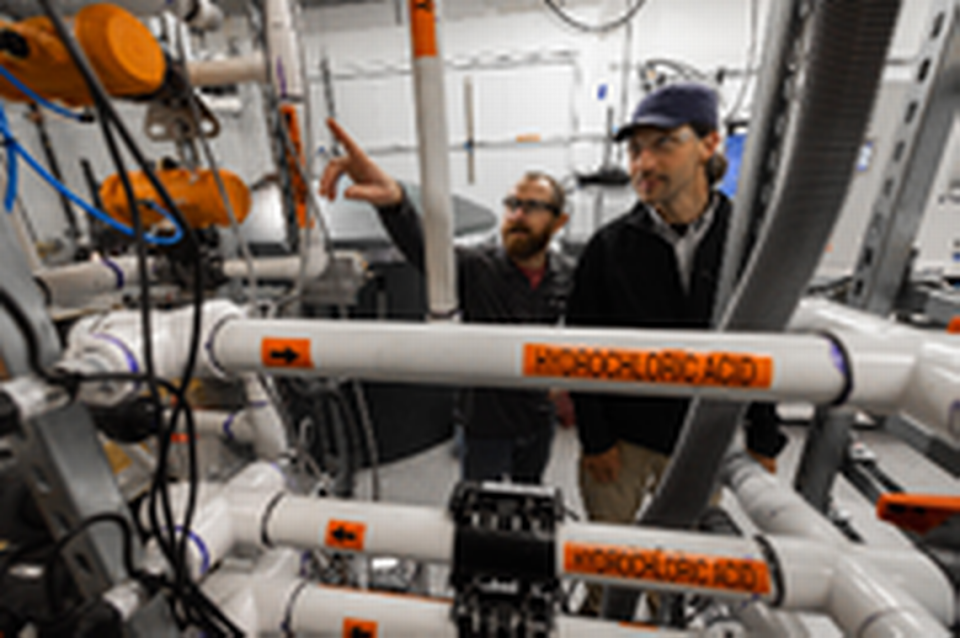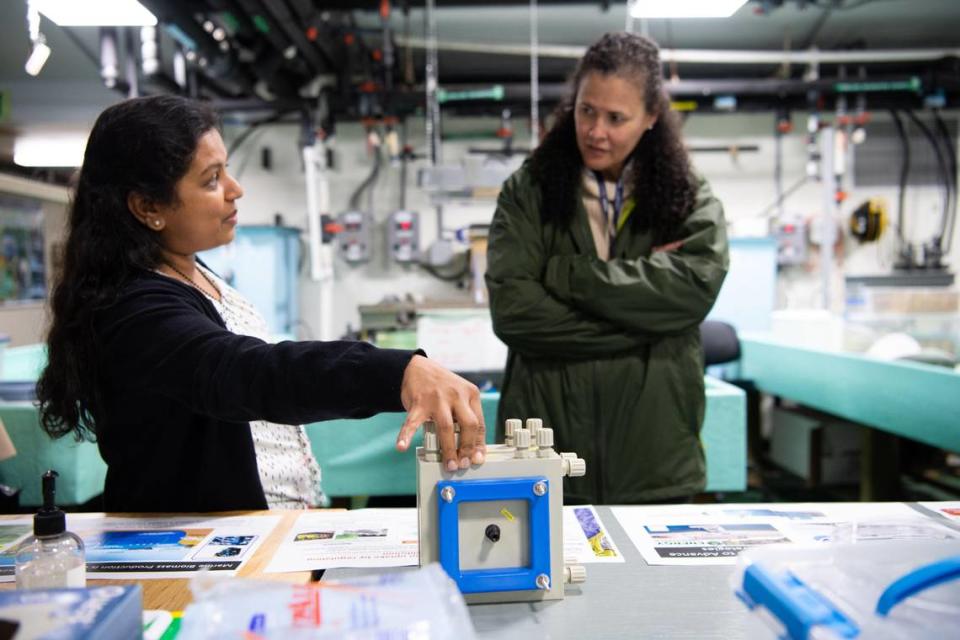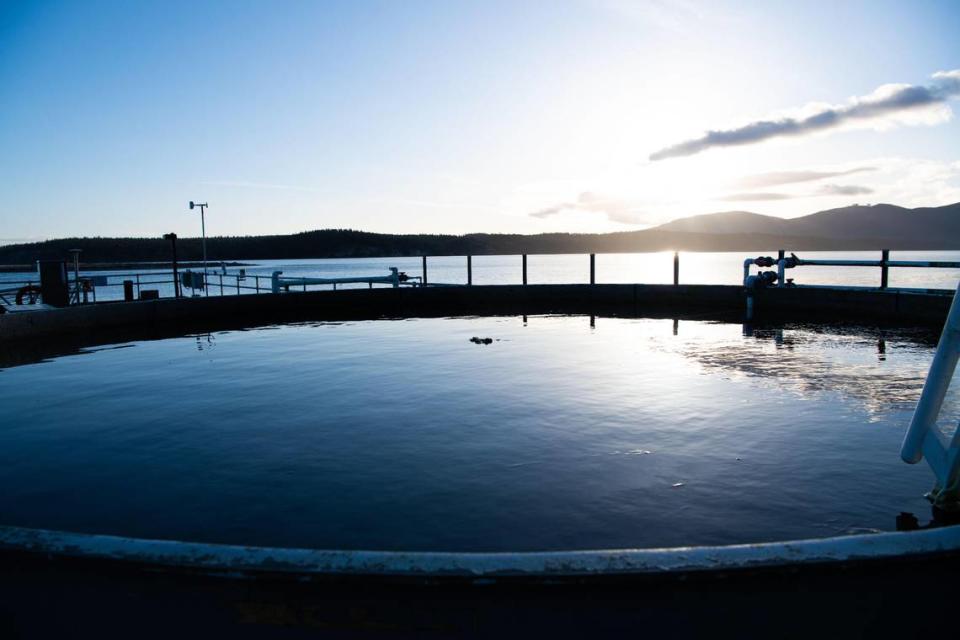Pacific Northwest researchers using seawater to find solutions for global warming
When it comes to fighting global warming, capturing and storing carbon dioxide from the atmosphere is an attractive but challenging option.
Since oceans cover nearly three-quarters of Earth’s surface, and already absorb at least 25%of global carbon dioxide emissions, it is logical to consider the oceans’ role as a natural carbon sink.
Researchers at the Department of Energy’s Pacific Northwest National Laboratory are applying their expertise in ecosystems science, biogeochemistry and engineering to develop and study techniques for doing just this.
The approach, known as marine carbon dioxide removal, or mCDR, involves diverse natural and technological pathways.
As researchers create new mCDR technologies, they also work toward economical and environmentally responsible deployment. Their efforts include quantifying how much carbon is removed, improving process efficiencies, understanding the effects on ecosystems and engaging stakeholders.
In one such project involving a public-private partnership supported by DOE and the National Oceanic and Atmospheric Administration, researchers are evaluating a technology developed by Ebb Carbon at PNNL’s campus in Sequim, Wash. The technology removes acid from seawater, increasing its ability to absorb carbon dioxide while balancing acidity to avoid risks to coastal ecosystems.
The tests are some of the first using real seawater rather than artificial simulants. By doing so, researchers can better evaluate the system’s performance, energy consumption and durability — information crucial to eventual deployment.

To conduct these studies in a controlled setting, experiments take place in large holding tanks of water from Sequim Bay. As the technology increases the alkalinity, scientists carefully monitor resulting changes in carbon dioxide concentrations and water quality.
Scientists use other tanks to study the effects of the more alkaline (less acidic) water on native organisms such as eel grass and oysters. Coupled with Sequim Bay models developed at PNNL, these results begin to provide a holistic view of how the approach impacts the marine ecosystem.
Scientists also perform complementary research to determine potential uses for the acid removed from seawater. For example, it could be used to enhance cultivation of algae or seaweed for natural fertilizer, biofuels and bioplastics, or to regenerate sorbents for extracting critical minerals from seawater.
In this way, they are exploring how mCDR can bring new economic opportunities to coastal communities while simultaneously reducing carbon dioxide in the atmosphere — a real win-win!
In other research, PNNL is partnering with universities in Alaska, Virginia and Washington to model ocean alkalinity enhancement processes and assess their effectiveness in different locations.

Earth scientists will incorporate biogeochemical and carbon data into regional-scale ocean models and use the models to predict the impact of these processes in the Gulf of Alaska, Chesapeake Bay and Salish Sea.
Through projects like this, PNNL is informing a framework for measuring, reporting and verifying the amount of carbon captured. Standardized accounting is important so that mCDR can be part of carbon offset markets.
Such markets would give coastal communities — those often impacted by climate change via intense storms and rising sea levels — the same ability to get credit for carbon-reduction efforts as their inland counterparts.
In related efforts, PNNL experts engage industry, regulators and communities in discussions of the pros and cons of mineralization for long-term carbon sequestration.

Given that mineralization can occur on land or in the ocean, these efforts focus on developing comparable evaluation frameworks across all settings. Stakeholder engagement assures that communities are involved in decision-making and future deployments of carbon removal technologies are safe and equitable.
The ocean’s natural processes already play a pivotal role in capturing carbon.
At PNNL, researchers are applying their interdisciplinary expertise and partnerships with academia, industry and local communities to better understand these processes and responsibly bring forward new ocean-based climate solutions. Thanks to their efforts, we can look forward to a more prosperous, greener future!
Steven Ashby is director of Pacific Northwest National Laboratory in Richland, Wash.

